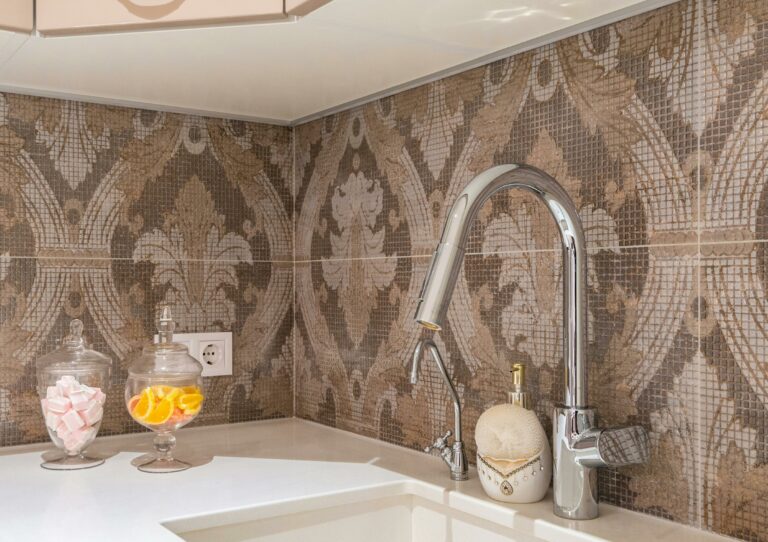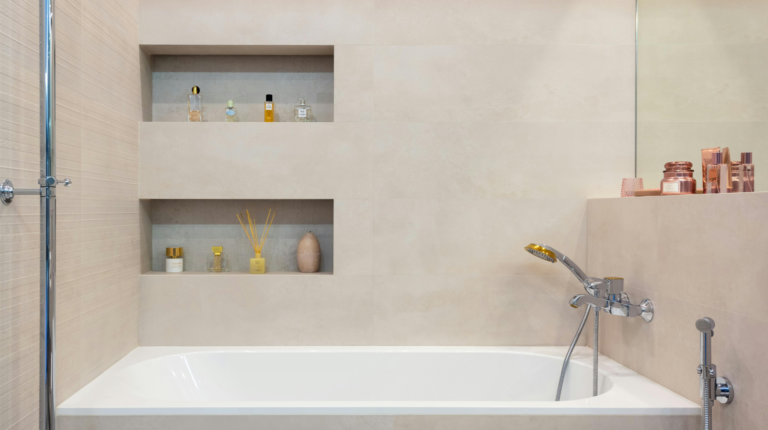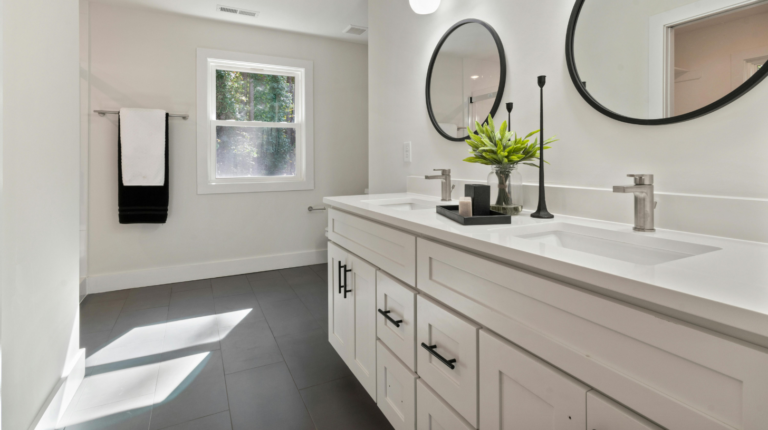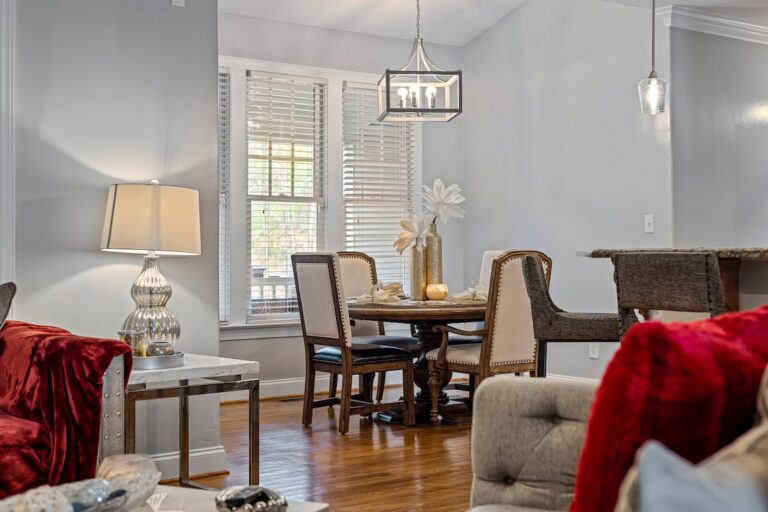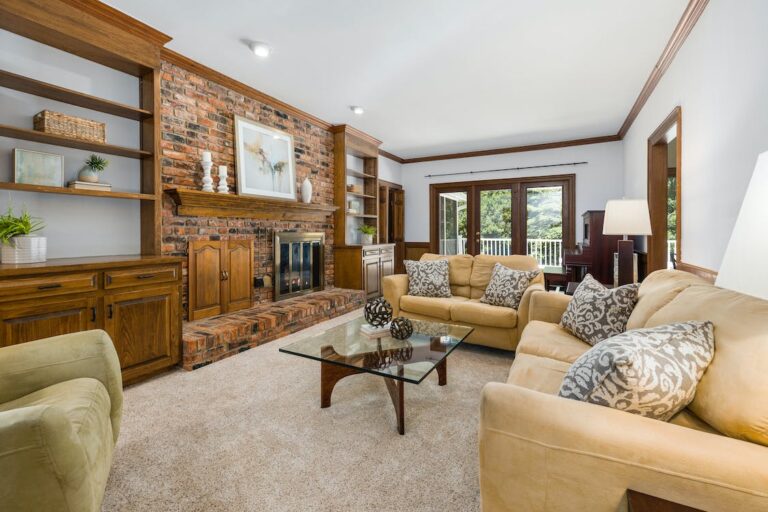Kitchen Renovation Mistakes to Avoid in 2023: Tips from the Pros
Welcome to “Kitchen Renovation Mistakes to Avoid: Tips from the Pros”! Are you considering a kitchen renovation? Whether you’re planning a complete overhaul or just a few updates, it’s important to approach the project with careful thought and consideration. A well-executed kitchen renovation can not only improve the functionality and aesthetics of your space but also increase the value of your home.

But, before you dive headfirst into your kitchen renovation project, it’s crucial to be aware of the common mistakes that homeowners often make. Learning from the experience of professionals in the field can help you avoid these pitfalls and ensure a successful transformation. In this article, we’ll share some valuable tips to help you navigate the renovation process with confidence.
Table of Contents
- 1 Kitchen Renovation Mistakes to Avoid
- 2 Setting a Realistic Budget for kitchen renovation
- 3 Planning and Designing the Layout
- 4 Choosing the Right Materials
- 5 Hiring the Right Professionals
- 6 Avoiding Common Kitchen Renovation Design Mistakes
- 7 Navigating Plumbing and Electrical Considerations
- 8 Ensuring Proper Ventilation and Lighting
- 9 Avoiding Trendy Choices
- 10 Appliance Selection and Placement
- 11 Conclusion
- 12 Frequently Asked Questions
Kitchen Renovation Mistakes to Avoid
From setting a realistic budget to choosing the right materials and hiring the right professionals, we’ll cover a wide range of topics to guide you through your kitchen renovation journey. By following these expert tips, you can make informed decisions and create your dream kitchen that not only meets your needs but also reflects your personal style.
So, grab a cup of coffee and let’s dive in to discover the kitchen renovation mistakes you need to avoid, along with practical advice from the pros.
Setting a Realistic Budget for kitchen renovation
Renovating your kitchen can be an exciting and rewarding project, but it’s important to start off on the right foot by setting a realistic budget. Without proper planning and budgeting, you could end up overspending or compromising on important design elements. To help you navigate the budgeting process, here are some tips from the pros:
- Assessing Your Needs and Wants: Before starting your kitchen renovation, take some time to assess your needs and wants. What are the must-have features and elements you want to incorporate? Are there any specific appliances or materials that you have your heart set on? By clearly identifying your priorities, you can allocate your budget accordingly and make informed decisions.
- Researching the Average Costs: Researching the average costs of kitchen renovations in your area can give you a good baseline for setting your budget. Keep in mind that costs can vary depending on factors such as the size of your kitchen, the materials you choose, and whether you plan to do any structural changes. Having a realistic understanding of the costs can help you make informed decisions and avoid any surprises down the line.
- Considering Hidden Expenses: When setting your budget, don’t forget to consider hidden expenses that can easily be overlooked. These can include costs for permits, design fees, demolition, disposal of old materials, and unexpected repairs. It’s always a good idea to set aside a contingency fund to account for any unforeseen expenses that may arise during the renovation process.
By taking the time to set a realistic budget and considering all the necessary expenses, you can ensure that your kitchen renovation stays on track and meets your expectations. Remember, a well-planned and budgeted renovation will not only give you a beautiful kitchen but also provide a better return on your investment.
Planning and Designing the Layout

When it comes to kitchen renovations, one of the most important tasks is planning and designing the layout. A well-designed layout ensures that your kitchen is not only beautiful but also functional and efficient.
After all, the layout of your kitchen will determine how easy it is to cook, clean, and move around in the space. Here are some key considerations to keep in mind when planning and designing your kitchen layout:
Evaluating the Existing Space
Before you start planning your new kitchen layout, take a good look at the existing space. Assess the size and shape of the room, as well as any architectural features or constraints you need to work around. Consider the location of windows, doors, and electrical outlets. Taking these factors into account will help you make the most of the available space and minimize any potential issues during the renovation process.
Optimizing Storage and Workflow
A well-designed kitchen layout maximizes storage and minimizes unnecessary movement. Consider the workflow of your kitchen. How will you move between the refrigerator, sink, and stove while cooking?
Aim for an efficient work triangle, where these three key areas are in close proximity to each other. This will ensure that you can easily navigate your kitchen while preparing meals.
Additionally, think about your storage needs. Incorporate cabinets and drawers to accommodate your pots, pans, dishes, and utensils. Consider including a pantry or a separate area for storing dry goods and small appliances. Utilizing smart storage solutions, such as pull-out shelves and vertical dividers, will help you make the most of your kitchen space.
Choosing the Right Materials
When it comes to kitchen renovations, the materials you choose can have a significant impact on the overall look, functionality, and longevity of your space. Here are some essential tips to help you select the right materials for your kitchen renovation:
Quality vs. Cost
- Don’t always go for the cheapest option: While it may be tempting to choose less expensive materials to save money, it’s essential to consider the quality. Investing in higher-quality materials will often result in better durability and a longer lifespan for your kitchen.
- Balance quality and cost: Look for materials that offer a good balance between quality and cost. Consider mid-range options that are durable and affordable, rather than opting for the most expensive or the cheapest materials on the market.
Durability and Maintenance
- Consider the wear and tear: The kitchen is one of the busiest areas in the home, so it’s crucial to select materials that can withstand regular use and are easy to maintain. Look for materials that are resistant to stains, scratches, heat, and moisture.
- Choose easy-to-clean materials: Opt for materials that are low-maintenance and easy to clean. Avoid porous materials that can absorb spills and require more frequent cleaning.
Eco-friendly Options
- Go green: If you’re conscious about the environment, choosing eco-friendly materials for your kitchen renovation is a great choice. Look for materials that are made from sustainable or recycled sources and have low VOC (volatile organic compounds) emissions.
- Consider reclaimed materials: Reclaimed or salvaged materials can add character and uniqueness to your kitchen while reducing the environmental impact. For example, using reclaimed wood for cabinets or countertops can create a rustic and eco-friendly look.
Remember, the materials you choose for your kitchen renovation should not only look beautiful but also be practical and durable. Take the time to research different options and consult with professionals to ensure you make the right choices for your needs and preferences.
“Choosing the right materials for your kitchen renovation is crucial for creating a beautiful and functional space. Don’t compromise on quality, prioritize durability and maintenance, and consider eco-friendly options to make a sustainable choice.”
Hiring the Right Professionals

When it comes to kitchen renovations, hiring the right professionals can make all the difference. They have the expertise and experience to bring your vision to life, ensuring that every detail is taken care of with precision and care. We’ve put together some tips to help you find the best contractors and designers for your kitchen renovation project.
Finding Reputable Contractors and Designers
Finding reputable contractors and designers is the first step in hiring the right professionals for your kitchen renovation. Here are a few ways to go about it:
- Ask for recommendations: Talk to friends, family, and neighbors who have recently completed kitchen renovations. They can provide valuable insights and recommendations based on their own experiences.
- Check online reviews: Websites like Yelp and Houzz offer reviews and ratings for contractors and designers. Take the time to read through these reviews to get a sense of their reputation and customer satisfaction.
- Consult with industry organizations: Reach out to your local home builders’ association or kitchen and bath association for recommendations. These organizations often have directories of professionals in your area.
Checking Licenses and Insurance
It’s essential to work with licensed and insured professionals to protect yourself and your investment. Here’s what you should do:
- Verify licenses: Check if the contractors and designers you’re considering have the necessary licenses and certifications required by your state or locality. You can usually find this information on their website or by contacting the relevant licensing authority.
- Ask for insurance coverage: Request proof of liability insurance from any professional you’re considering hiring. This protects you in case of any accidents or damage that may occur during the renovation process.
Reading Contracts Carefully
Before signing any contracts with contractors or designers, make sure to read them carefully. Here are a few things to look out for:
- Scope of work: Ensure that the contract clearly outlines the scope of work, including the specific tasks that will be completed, the timeline for completion, and any materials or products that will be used.
- Pricing and payment: Understand how the professionals will charge for their services and when payments will be due. Clarify whether the fees are fixed or if there’s room for negotiation.
- Guarantees and warranties: Check if there are any guarantees or warranties provided by the professionals for their workmanship or the materials they use.
By following these tips, you can hire the right professionals who will bring your kitchen renovation to life. They will help you avoid costly mistakes and ensure that the project is completed to your satisfaction.
“Hiring the right professionals for your kitchen renovation can make the process smooth and stress-free. Take the time to do your research and find reputable contractors and designers who understand your vision and have the skills to bring it to reality.”
Avoiding Common Kitchen Renovation Design Mistakes
When it comes to kitchen renovation, there are several design mistakes that homeowners commonly make. These mistakes can not only affect the functionality of your kitchen but also impact its overall aesthetic appeal. To ensure a successful kitchen renovation, it’s important to avoid these common design mistakes:
Ignoring the Kitchen Triangle

One of the biggest design mistakes that homeowners often make is ignoring the concept of the kitchen triangle. The kitchen triangle refers to the three main work areas in the kitchen – the sink, the refrigerator, and the stove. These three areas should form a triangle shape to ensure maximum efficiency and ease of movement.
Tips to avoid this mistake:
- Make sure the distance between these three areas is not too far apart, as it can lead to unnecessary walking and wasted time.
- Consider the flow and positioning of appliances, cabinets, and countertops to create a functional triangle.
- Keep in mind the work triangle when designing the layout of your kitchen.
Insufficient Counter and Storage Space
Another common mistake is not having enough counter and storage space in the kitchen. Limited counter space can make food preparation and cooking tasks challenging, while insufficient storage space can lead to cluttered countertops and a lack of organization.
Tips to avoid this mistake:
- Plan for enough counter space for meal preparations, appliance placement, and everyday tasks.
- Incorporate ample storage options such as cabinets, drawers, and pantry space.
- Utilize corner cabinets, pull-out shelves, and vertical storage solutions to maximize storage capacity.
Inadequate Electrical Outlets
Electrical outlets are an essential component of any kitchen. However, many homeowners overlook the importance of having an adequate number of outlets in their kitchen design. This can lead to a shortage of available outlets for appliances, gadgets, and charging stations.
Tips to avoid this mistake:
- Ensure that you have enough electrical outlets throughout your kitchen for all your needs.
- Consider adding outlets at the kitchen island, backsplash, and within cabinets for hidden charging stations.
- Plan the positioning of outlets strategically, keeping in mind the placement of appliances and countertop usage.
By avoiding these common design mistakes, you can make your kitchen renovation a smoother and more successful process. Remember to prioritize functionality, storage, and electrical needs when planning the layout and design of your kitchen. This way, you can create a space that not only looks beautiful but also meets your practical requirements.
When it comes to kitchen renovations, there are certain aspects that require special attention to ensure a smooth and successful project. One of these crucial areas is plumbing and electrical considerations.
Making the right decisions in this area can save you from future headaches and costly repairs. In this section, we’ll discuss everything you need to know about navigating plumbing and electrical considerations during your kitchen renovation.
Plumbing Requirements and Placement

When it comes to plumbing in the kitchen, you need to consider the following:
- Water supply: Assess the existing water supply lines and determine if any adjustments or upgrades are needed. Ensure that the water supply lines are in good condition and can handle the demands of your new kitchen fixtures, such as sinks, dishwashers, and refrigerators with ice makers.
- Drainage: Evaluate the existing drainage system and make sure it can accommodate the increased load. Install proper drainage systems for sinks, dishwashers, and garbage disposals to avoid clogs and backups.
- Plumbing placement: Plan the placement of your plumbing fixtures, such as the sink, dishwasher, and refrigerator, to optimize functionality and workflow. Consider the positioning of the fixtures in relation to your countertop workspace and kitchen triangle (the imaginary line between the sink, refrigerator, and stove).
- Professional assistance: It’s advisable to consult a licensed plumber for any plumbing-related concerns. They will ensure that the plumbing meets building codes and regulations and provide expert advice on layout and installation.
Electrical Outlets and Lighting Fixtures

Proper electrical planning is crucial for a functional and safe kitchen. Consider the following:
- Power outlets: Determine the number and placement of electrical outlets based on your kitchen needs. Adequate outlets are essential for appliances, lighting, and charging devices. Include dedicated circuits for high-power appliances like dishwashers and refrigerators.
- GFCI outlets: Install Ground Fault Circuit Interrupter (GFCI) outlets near water sources, such as the sink area, to provide protection against electrical shock.
- Lighting: Plan the lighting design carefully to ensure proper illumination in all areas of your kitchen. Consider a combination of task lighting, ambient lighting, and accent lighting for optimal functionality and aesthetics. Include under-cabinet lighting to enhance visibility on countertops.
- Dimmer switches: Install dimmer switches for adjustable lighting levels, allowing you to create the desired ambiance in your kitchen.
- Professional electrician: Consulting a licensed electrician is crucial to ensure all electrical work is done safely and up to code. They will help with proper installation, wiring, and safety considerations.
Appliance Compatibility

When choosing appliances for your kitchen, consider their compatibility with your plumbing and electrical systems:
- Size and configuration: Ensure that the appliances you choose fit properly into the allocated space and have the necessary clearances for proper ventilation. Measure the dimensions of your appliances before finalizing cabinet arrangements.
- Power requirements: Check the electrical specifications of your appliances to ensure that your electrical system can handle their power demands. If necessary, upgrade your electrical panel to accommodate high-wattage appliances.
- Water and gas connections: Consider the water and gas requirements of appliances like refrigerators, dishwashers, and stoves. Ensure that your plumbing and gas lines can accommodate these connections without any issues.
- Professional installation: It is highly recommended to have a professional appliance installer handle the installation process. They will ensure that the appliances are installed correctly, connected to the plumbing and electrical systems safely, and compliant with all regulations.
By considering plumbing and electrical considerations during your kitchen renovation, you can ensure that your new kitchen is functional, safe, and meets all building codes and regulations. Hiring professional plumbers and electricians will provide you with the expertise needed to navigate these areas successfully.
Remember, when it comes to plumbing and electrical work, it’s always better to be safe than sorry!
Ensuring Proper Ventilation and Lighting

Good lighting is essential in the kitchen, as it affects both the functionality and aesthetics of the space. Incorporate a mix of task lighting, ambient lighting, and accent lighting to create a well-lit and inviting atmosphere. Install under-cabinet lighting to illuminate your countertops, pendant lights for statement pieces, and recessed lighting for overall brightness.
Ventilation is another important aspect to consider when planning your kitchen layout. A well-ventilated kitchen helps to remove cooking odors and moisture, keeping the air fresh and preventing the growth of mold and mildew.
Ensure that your kitchen has proper ventilation through an exhaust fan or range hood that vents outside. Consider the placement of your cooking appliances in relation to ventilation outlets to optimize airflow.
By carefully planning and designing the layout of your kitchen, you can create a space that is not only visually appealing but also highly functional. Remember to evaluate the existing space, optimize storage and workflow, ensure proper lighting and ventilation, and you’ll be well on your way to a successful kitchen renovation.
When renovating your kitchen, it’s important to pay close attention to proper ventilation. Good ventilation helps remove cooking odors, smoke, and moisture, leaving your kitchen fresh and comfortable. It also helps prevent the buildup of harmful pollutants and improves the overall air quality in your home. To ensure proper ventilation in your kitchen, consider the following tips:
Choosing the Right Range Hood
A range hood plays a crucial role in removing smoke, steam, and cooking odors from your kitchen. When selecting a range hood, keep the following factors in mind:
- Size: Choose a range hood that is appropriately sized for your kitchen and cooking needs. A range hood that is too small may not effectively capture all the air pollutants.
- Power: Look for a range hood with sufficient power and airflow capacity to handle the size of your kitchen and your cooking style. It’s recommended to have a range hood that can replace the air in your kitchen at least 15 times per hour.
- Noise Level: Consider the noise level of the range hood. Look for models with noise ratings that are acceptable for your comfort.
- Filters: Consider range hoods with built-in filters that can capture grease and other particles, making cleaning and maintenance easier.
Considering Natural Ventilation Options
In addition to a range hood, it’s beneficial to incorporate natural ventilation options into your kitchen design. Natural ventilation helps circulate fresh air and maintain a comfortable environment. Here are some ideas for incorporating natural ventilation:
- Windows: Install windows in your kitchen to allow fresh air to flow in and hot air to escape. Positioning windows strategically can create a cross-ventilation effect, improving air circulation.
- Skylights: Skylights are an excellent way to bring in natural light and fresh air. They can be especially beneficial in kitchens with limited wall space for windows.
- Doors: Consider installing a door with a window or a vented panel to allow fresh air to enter the kitchen from adjacent rooms.
Proper Ducting and Vent Placement
Proper ducting and vent placement are essential for effective ventilation. Here are a few considerations:
- Ductwork: Ensure that the ductwork is properly sized to accommodate the airflow from your range hood. Flexible ductwork is often used for range hoods, as it allows for more versatile placement and easier installation.
- Vent Placement: Position the range hood vent to exhaust air outside the house rather than recirculating it back into the kitchen. The vent should be placed away from windows and air intake vents to prevent air recirculation.
- Ventilation Pathways: Minimize the number of bends and turns in the ductwork, as this can reduce the efficiency of the ventilation system. Straight ducts with smooth interior surfaces allow for better airflow.
Remember, proper ventilation is essential for maintaining a healthy and comfortable kitchen environment. By choosing the right range hood, incorporating natural ventilation options, and ensuring proper ducting and vent placement, you can enjoy a fresh and well-ventilated kitchen that enhances your cooking experience.
“Proper ventilation in the kitchen is important for removing cooking odors, smoke, and moisture, and improving air quality.”
Avoiding Trendy Choices

When it comes to kitchen renovation, it’s easy to get caught up in the latest trends and fads. However, it’s important to remember that trends come and go, and your kitchen should be designed to stand the test of time.
While it’s okay to incorporate some trendy elements, it’s essential to strike a balance and make choices that will still look great years down the line. Here are some tips for avoiding trendy choices and creating a timeless kitchen design:
- Opt for Timeless Designs: Instead of chasing after the latest fads, opt for classic designs that have proven to be timeless. Styles like Shaker cabinets, subway tile backsplashes, and hardwood flooring are classic choices that will never go out of style. By choosing timeless designs, you ensure that your kitchen will look great for years to come without the need for constant updates.
- Consider Resale Value: If you’re planning to sell your home in the future, it’s essential to consider the resale value of your kitchen renovation. Trends that are popular today may not be appealing to potential buyers later on. Opting for neutral colors, high-quality materials, and functional layouts can increase the appeal of your kitchen and make it more attractive to potential buyers.
- Incorporate Personal Style: While it’s important to avoid being overly trendy, that doesn’t mean you can’t infuse your personal style into your kitchen design. Find ways to incorporate your unique tastes through accessories, lighting fixtures, or artwork. These elements can be easily updated if your preferences change, without the need for a full kitchen renovation.
Remember, it’s possible to have a stylish kitchen without following every passing trend. By focusing on timeless designs, considering resale value, and adding personal touches, you can create a kitchen that will stand the test of time.
Don’t be afraid to consult with a professional designer who can help you strike the right balance between trendy and timeless.
Appliance Selection and Placement
When it comes to kitchen renovation, choosing the right appliances and determining their placement are crucial decisions. After all, appliances play a key role in the functionality and efficiency of your kitchen. Whether you’re upgrading your existing appliances or starting from scratch, here are some tips to help you make the best choices:
Choosing Energy-efficient Appliances
In today’s environmentally conscious world, energy efficiency is an important consideration. Opting for energy-efficient appliances not only helps reduce your carbon footprint but also saves you money on your energy bills. Look for appliances with an Energy Star certification, as they meet strict energy efficiency standards set by the government.
Proper Sizing and Configuration
When it comes to appliance selection, size does matter. Before purchasing appliances, assess your kitchen layout and consider the available space. Ensure that the appliances you choose fit properly within the designated areas. Take precise measurements to avoid any issues with installation or installation.
Additionally, consider the configuration of your appliances. If you cook frequently, you might prefer a double oven setup or a larger cooktop. If you have a small kitchen, a compact refrigerator might be the best choice. Consider your cooking habits and lifestyle to determine the appropriate size and configuration for your appliances.
Considering Traffic Flow

The placement of your appliances should also take into account the traffic flow in your kitchen. A well-designed kitchen layout ensures that appliances are conveniently located, allowing for seamless movement during food preparation. Here are some considerations for traffic flow:
- Refrigerator placement: The refrigerator should be easily accessible, allowing you to retrieve ingredients without interrupting the flow of cooking. It should ideally be located near the entrance of the kitchen or in a central area.
- Sink location: The sink is another essential element in the kitchen. It is advisable to place the sink near the dishwasher for easy access when loading and unloading dishes. Consider placing the sink in a central location to minimize trips across the kitchen.
- Cooking area: The cooktop or range should be placed in proximity to the sink and refrigerator. This arrangement creates a functional work triangle and allows for efficient movement during meal preparation.
By strategically considering the placement of your appliances, you can create a kitchen that is not only aesthetically pleasing but also practical and functional.
Remember, kitchen renovation is a significant investment, and choosing the right appliances is crucial to ensure long-term satisfaction. Take your time to research and compare options, and don’t hesitate to seek advice from professionals if needed.
With careful consideration and planning, you can create a kitchen space that meets your needs and enhances your cooking experience.
Also read – The Dos and Don’ts of Home Decor : Common Mistakes to Avoid
Conclusion
In conclusion, a successful kitchen renovation requires careful planning, realistic budgeting, and attention to detail. By avoiding common mistakes and following the tips provided by the pros, you can create a beautiful and functional space that meets your needs and exceeds your expectations.
Remember, setting a realistic budget from the beginning is essential. Assess your needs and wants, research average costs, and consider hidden expenses to ensure you are financially prepared for your renovation project.
Careful planning and designing of the layout will optimize storage and workflow in your kitchen. Evaluate the existing space, think about how to improve storage, and make sure to ensure proper lighting and ventilation for a comfortable cooking environment.
Choosing the right materials is another crucial aspect. Consider quality versus cost, durability and maintenance requirements, and eco-friendly options that align with your values.
Hiring the right professionals is key to a successful kitchen renovation. Take the time to find reputable contractors and designers, check licenses and insurance, and carefully read contracts to avoid any surprises later on.
Avoid common design mistakes such as ignoring the kitchen triangle, insufficient counter and storage space, and inadequate electrical outlets. Keep these factors in mind when planning your kitchen layout.
Plumbing and electrical considerations should not be overlooked. Make sure to understand plumbing requirements and placement, plan for sufficient electrical outlets and lighting fixtures, and consider appliance compatibility.
Proper ventilation is essential in a kitchen to keep the air clean and comfortable. Choose the right range hood, consider natural ventilation options, and ensure proper ducting and vent placement to remove cooking odors and prevent moisture buildup.
While it may be tempting to follow trendy design choices, opting for timeless designs will ensure that your kitchen remains stylish and timeless for years to come. Consider resale value and incorporate your personal style to make the space truly your own.
Lastly, when selecting appliances, choose energy-efficient options that save on utility costs. Consider proper sizing and configuration to fit your needs and think about traffic flow to ensure a functional kitchen layout.
By avoiding common mistakes and following the expert tips discussed in this article, you can confidently embark on your kitchen renovation journey and create the kitchen of your dreams. Happy renovating!
Frequently Asked Questions
- What are some common kitchen renovation mistakes to avoid?Some common kitchen renovation mistakes to avoid include: not having a clear plan, underestimating the budget, overlooking functionality, choosing poor quality materials, and neglecting storage and organization.
- How can I avoid going over budget during a kitchen renovation?To avoid going over budget during a kitchen renovation, it is important to set a realistic budget from the beginning, prioritize your expenses, be mindful of material and labor costs, and make a detailed plan before starting the renovation.
- What should I consider when planning a kitchen renovation?When planning a kitchen renovation, you should consider your needs and preferences, the layout and functionality of the space, the available budget, the quality of materials, and any additional features or upgrades you want to include.
- How can I maximize storage and organization in my renovated kitchen?To maximize storage and organization in your renovated kitchen, consider adding cabinets with smart storage solutions, use vertical space efficiently, install pull-out shelves and organizers, and incorporate a pantry or kitchen island with ample storage options.
- Is it necessary to hire professionals for a kitchen renovation?While it is possible to do a kitchen renovation yourself, it is generally recommended to hire professionals, especially for complex tasks such as plumbing, electrical work, and installation of countertops and cabinets. Professionals can ensure quality work and help you avoid costly mistakes.



